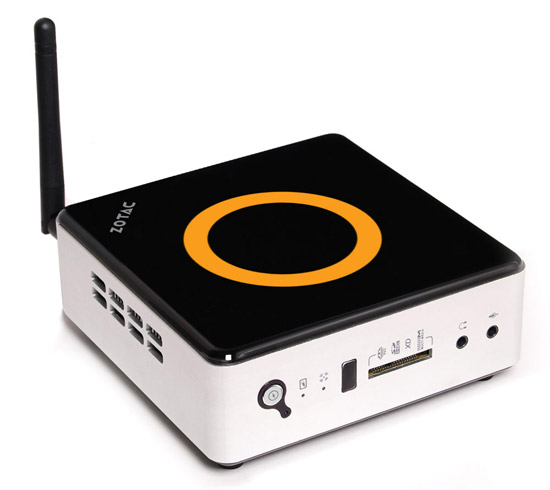When HTC first starting supporting Android it was a watershed decision; could the same hold true for VIA's x86 platforms? Could this be a catalyst for Android to find itself in more than just smartphones and the odd tablet PC?
VIA Technologies, Inc. designs and manufactures a slew of embedded products including ultra low votage CPUs, embedded motherboards and barebone systems. They also, of course, design the Mini-ITX, Nano-ITX, Pico-ITX and Em-ITX platforms that are widely used in the embedded market. This blog feed follows news and reviews on VIA embedded products, especially those available in Australia.
Wednesday, December 28, 2011
VIA Embedded Supporting Android
When HTC first starting supporting Android it was a watershed decision; could the same hold true for VIA's x86 platforms? Could this be a catalyst for Android to find itself in more than just smartphones and the odd tablet PC?
Tuesday, December 27, 2011
Build a Dedicated BitTorrent Box with a ZOTAC
An introduction to Mini-ITX on eHow
eHow.com http://www.ehow.com/info_12212968_miniitx-performance.html#ixzz1hmSV9Uy8
Sunday, December 18, 2011
Android on a VIA x86 Board in Action
VIA's x86 embedded boards support Android
"Key advantages for Android on x86 include leverage of Android development resources and existing apps, rich I/O flexibility, greater CPU performance as well as higher display resolutions of up to 1920 x 1080. In addition VIA has released SMART ETK, an Embedded Tool Kit which allows monitoring and control of peripheral devices through the Android OS, allowing for greater environmental control of kiosk and other installed environments."
Find more information here.
Wednesday, December 14, 2011
Monday, December 12, 2011
Just add RAM, storage and power
At USD$89 the new VIA VE-900 Mini-ITX board is an alluringly inexpensive way to build a PC that is well set up for multimedia use. BIOSLEVEL.com have reviewed the new board with pleasing results.
"I'm not sure I've ever seen a Via chip outperform a competitor from Intel, but the VE-900's 1.4GHz Nano X2 processor accomplishes this without breaking a sweat or needing overclocked. Paired with 8GB of RAM, I found the performance from the VE-900 to rival that of desktop systems from only a few years ago, all while using a fraction of the power."
With the right packaging and marketing an astute start-up could revitalise the desktop market with and affordable small form factor PC based on the VE-900.
Tuesday, November 22, 2011
Desktop computer with power and finesse
But why focus on the multimedia aspects so much? The thing is, this setup ticks all the boxes for a desktop for the vast majority of people. Why on earth would you have a hefty beige or silver box whirring away taking up desk or foot space when you can have this literally sitting under the profile of most LCD monitors?! Crazy!
More at the official Press Release.
Sunday, November 13, 2011
VIA launches new dual-core Mini-ITX
The feature set of this board also includes 1080p video support care of the VX900 media system processor and there's HD audio as well.
The board is available " ... worldwide at incredibly competitive pricing."
Monday, November 7, 2011
Dual core brought to Em-ITX form factor
This board has a lot of output options, including support for dual displays.
Wednesday, November 2, 2011
A long time coming. HP finally endorses low power CPUs for datacenters
HP have now gone so far as to endorse ARM processors for hyper-scale datacenters. I wonder if VIA's Wondermedia can get on board with these projects? [Source: FT.com]
Sunday, October 23, 2011
VIA chips feature in IGEL's new Windows Standard 7 thin clients
The setup promises a long life span for IGEL and its customers.
Source: TechZone360.
Monday, October 17, 2011
Zotac adding a VIA based system to their Zbox range
The look of the VD01 is the same as a previous AMD based Xbox model. Linux for Devices.com notes that the price hasn't been released yet, but that it's probably going to be cheaper, aimed at the entry level market.
Other specs include:
* Processor -- Via Nano X2 U4025 (dual-core, 1.2GHz)
* Chipset -- Via VX900
* Memory -- single SODIMM slot; VD01 Plus model bundles 2GB of DDR3 RAM
* Storage:
o 6-in-1 memory card reader (SD/SDHC/MS/MS Pro/xD/MMC)
o 2.5-inch drive bay, supporting 3.0 Gb/sec. SATA devices; VD01 Plus adds 320GB drive
* Networking -- gigabit Ethernet
* Wireless:
o 802.11b/g/n with antenna
o Bluetooth 3.0
o onboard IR receiver with remote
o USB IR receiver
* Other I/O:
o eSATA port
o 2 x USB 3.0
o 2 x USB 2.0
o HDMI
o DisplayPort
o audio -- mic in, headphone out, S/PDIF out
* Power -- 19VDC via bundled AC adapter
* Dimensions -- 5.0 x 5.0 x 1.7 inches
Sunday, October 9, 2011
New thin client gets upgrade to VIA Nano
It's a tip of the hat to VIA that Igel has upgraded using VIA hardware. VIA's processors are ideally suited to the thin client environment, where passive cooling and low noise levels are ideal.
The new version of the UD5 also runs Windows Embedded Standard 7 configuration, or Linux can be used.
Source: LinuxforDevices.com
Wednesday, September 28, 2011
VEPD supports VxWorks RTOS
"The VIA EPIA-M900 Mini-ITX board will be the first VIA motherboard to offer the BSP for VxWorks. Wind River’s VxWorks is a robust, reliable RTOS with a small footprint that offers fast booting and increased security suitable for resource-constrained environments critical in medical, industrial automation, transportation and other mission-critical applications."
More information is available from VIA's official Press Release.
VIA upgrades an EPIA board; a clever way to retain customer designs
"Combining a VIA 1.0GHz C7 processor with the VIA VX900 unified all-in-one media system processor, the VIA EPIA-M720 delivers a highly optimized platform that boasts comprehensive HD video performance, HD audio and HDMI support in a compact, power-efficient package to meet the broader scope of needs for today's advanced digital signage, POS, Kiosk, ATM, home automation, healthcare and media client system design applications."
More from the official Press Release.
Sunday, September 18, 2011
Zotac ZBOX with VIA Nano arrives in Japan
The quiet, fanless, low power consuming VIA model of the ZBOX is a lovely compact PC that's ideal for customer information terminals, media boxes, file storage, and even as quiet low profile desktop replacements.
Friday, July 1, 2011
The VIA AMOS-5001 modular chassis wins an award
“VIA Technologies has made prototyping hardware and software designs easier with the VIA AMOS-5001 chassis kit,” says Chris A. Ciufo, OpenSystems Media, Group Editorial Director, Military and Aerospace Group. “This flexible kit measures up to be tough enough to withstand harsh conditions but is moldable to many different applications.”
- More.
Tuesday, June 21, 2011
Small form factor Editor's Choice award

"Getting started can be the hardest part of the design process. But VIA Technologies has made prototyping hardware and software designs easier with the VIA AMOS-5001 chassis kit. Whether or not the final design uses VIA’s x86 CPUs or the Em-ITX form factor, it’s still a useful platform to begin with and makes that whole getting started thing much more doable."
Monday, June 13, 2011
Home system integration interested in ZOTAC ZBOX

Thursday, June 2, 2011
New VIA VB8004 offers mutliplicity of display options
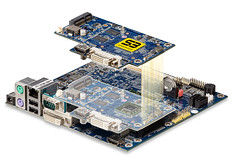
Monday, May 30, 2011
ZOTAC ZBOX featuring VIA Nano X2 to debut at Computex
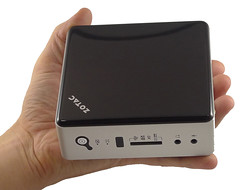
Wednesday, May 18, 2011
Want details about the new EPIA-M860 for POS systems?

Tuesday, May 17, 2011
VIA launches new POS board

"Designed as a full featured entry level VX900 board, the EPIA-M860 is the first EPIA board which supports Windows Embedded POSReady 7, a flexible operating system designed to seamlessly connect Point of Service (POS) solutions with peripherals, servers, services and the cloud. The VIA EPIA-M860 offers PCI, PCIe and Mini PCIe support, combined with mainstream DDR3 memory and both ATX and DC-in power support." - Press Release.
VIA's Nano processors hailed as the start of micro-servers
Sunday, May 8, 2011
VIA Dual Core processors for embedded market sampling now
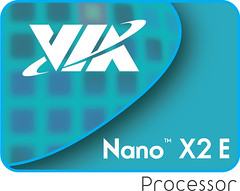
"VIA Nano X2 E-Series processors are natively 64-bit compatible, facilitating an essential transition for the future of the embedded industry as 64-bit operating systems such as Windows® Embedded Standard 7 allow for vastly improved data throughput per clock cycle. This makes it easier to manipulate large data sets and improves overall performance. VIA Nano X2 E-Series processors are also fully compatible with Windows CE and Linux operating systems."
Wednesday, April 27, 2011
6th VIA AMOS system announced

Monday, April 4, 2011
Windows for devices gives the skinny on the new VIA ART-5450
Sunday, March 27, 2011
An oldie but a goodie
Tuesday, March 15, 2011
VIA launches new ART-5450 in-vehicle management box
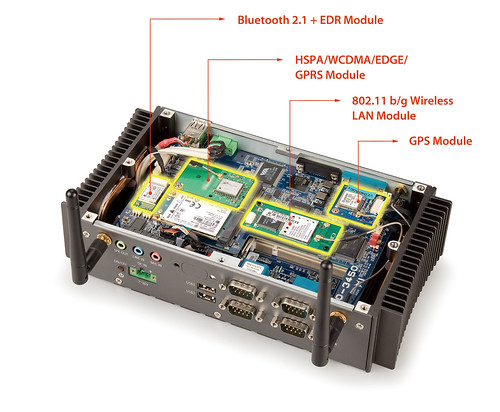
There's quite a choice of 3G modules, including HSPA, WCDMA, EDGE and GPRS. Other features include a SIM card slot, 20 channel GPRS receiver and W-Fi.
Tuesday, March 1, 2011
VIA announces dual-core Eden processors
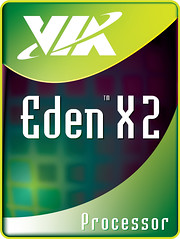
"VIA Eden X2 processors bring additional features that include VIA VT virtualization, a technology that allows legacy software and applications to be used in virtual scenarios without impacting on performance. The unique VIA AES Security Engine offers hardware-based data encryption on the fly, and essential tool in content protection and system security." - Source: Press Release.
Wednesday, February 23, 2011
Vision Intelligence Displays launched by VIA Embedded
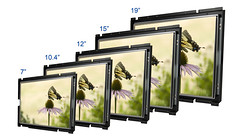
Tuesday, February 22, 2011
VIA shows of HD digital signage at Las Vegas Expo
At the Expo, will will also be showing off both ARM and X86 based products for digital signage.
"A range of VIA EPIA Mini-ITX boards with additional graphical and HD multimedia muscle will be demonstrated, including boards based on the multimedia-focused VIA VX900 chipset and the latest VIA Nano X2 dual core processor.
Complete digital solutions systems will be shown, including the robust VIA VIPRO panel series which combine a comprehensive range of features in a high quality, industrial-grade LCD panel. Other signage systems include and the VIA VMPC, a fanless, ultra thin system featuring an industry-first thru-chassis VESA mounting design, turning any standard display into a digital signage device in moments. "
The show runs until tomorrow, 24th February. Source: Press Release.
Tuesday, January 4, 2011
VIA Nano goes 40 nanometer and multi-cores
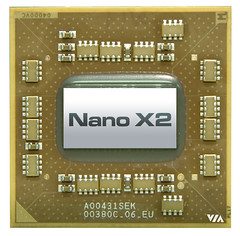
Monday, January 3, 2011
VIA appoints Simmtronics as distributor/manufacturer
This is therefore much more than a simple distributor agreement, with Simmtronics actually manufacturing VIA products in India, rather than shipping completed systems into the country.
VIA leverages S3 to release graphics card for embedded market

VIA's acquisition of S3 Graphics eleven years ago has seen many S3 Graphics designs incorporated into integrated graphics solutions in VIA chipsets and digital media processors. Whilst VIA has included the Chrome series in EPIA boards before, they have now launched a new PCI Express graphics card, which they claim is the first low profile discrete card ever designed for the embedded industry.
The features of the card include:
PCIe 2.0 Bus Interface
512MB DDR3
Low profile form factor
Dual-Link DVI and HDMI (with HDCP)
Fully programmable DirectX 10.1 Unified Shader Core
OpenGL 3.1 + OpenGL ES 2.0
GPGPU on OpenCL 1.0
H.264 and VC-1 support for Blu-Ray
Support for resolutions up to 2560x1600
1080p/1080i/720p HD-decode
Steroscopic 3D capable
Dual display support
The embedded industry is increasingly finding that customers want better display output and more complex multi-monitor support. The eH1 card aims to fulfill this need.
